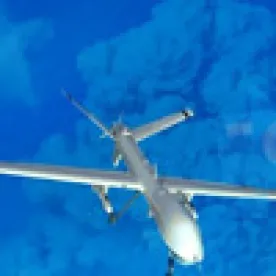On May 11, 2015, Xcel Energy became the latest electric utility to obtain an exemption under Section 333 of the 2012 FAA Modernization and Reform Act authorizing the company to conduct commercial small unmanned aircraft system (sUAS) operations. The exemption was issued exactly 90 days after the utility’s original petition which reflects the FAA’s continued efforts to streamline the issuance of such exemptions.
The exemption allows Xcel Energy to operate a DJI Spreading Wings S1000+ sUAS for aerial data collection which the company’s petition for exemption describes as conducting “feasibility studies/pilot projects to assess the applicability, practicability and potential for implementing sUAS for tasks including visual inspections of vital energy infrastructure such as electric transmission and distribution lines, power plants (including renewable energy facilities), substations, natural gas transmission and distribution pipelines, compressor stations, storage facilities and valves in order to further the public interest in the safe and reliable delivery of electricity and natural gas to customers.” The conditions and limitations included in Xcel Energy’s Section 333 exemption are consistent with those contained in other recent exemptions issued for various commercial sUAS operations.
As reported in the Denver Business Journal, Xcel Energy has already used small UAS to conduct inspections inside boilers located at power plants in Denver and Pueblo, Colorado and in Becker, Minnesota which, according to utility representatives, resulted in savings of about $100,000 per inspection and substantial time and worker safety benefits. Now, the utility’s Section 333 exemption will allow it to take its sUAS operations outdoors for flights below 400 feet in locations identified in its petition and for flights below 200 feet in other locations consistent with the “blanket” Certificate of Authorization announced by the FAA in March, 2015. While the Section 333 exemption restricts sUAS operations to private or controlled access-property with permission from the property owner, this condition demonstrates why sUAS are particularly well-suited to electric utility and other energy-related applications where infrastructure such as power plants, transmission lines, pipelines, and renewable energy facilities are located on property owned by the company or with limited public access for existing safety reasons.
Xcel Energy – which operates in ten states through its subsidiaries Northern States Power Company – Minnesota, Northern States Power Company – Wisconsin, Public Service Company of Colorado, Southwestern Public Service Company, and Xcel Energy Services – joins San Diego Gas & Electric Company, Commonwealth Edison Company, Consumers Energy Company, and Southern Company as the latest electric utility to obtain FAA approval for sUAS operations. Several other electric utilities have similar exemption petitions pending.
As of May 21, 2015, the FAA has granted a total of 416 Section 333 exemptions to individuals and businesses in a variety of commercial and industrial sectors while the agency continues to work toward issuing final rules for the operation and certification of sUAS. At the same time, Senators Cory Booker (D-NJ) and John Hoeven (R-ND) have introduced the Commercial UAS Modernization Act (S.1314) which, among other things, would establish an interim rule to streamline approval of commercial sUAS operations until the FAA’s final sUAS rules are issued. If enacted, the Commercial UAS Modernization Act would create additional opportunities for electric utilities and energy companies to begin deploying sUAS for infrastructure inspection and other purposes.




 />i
/>i
